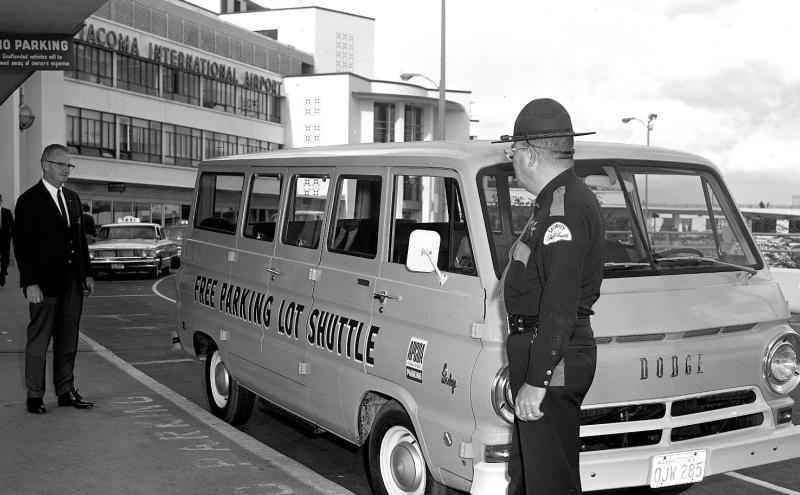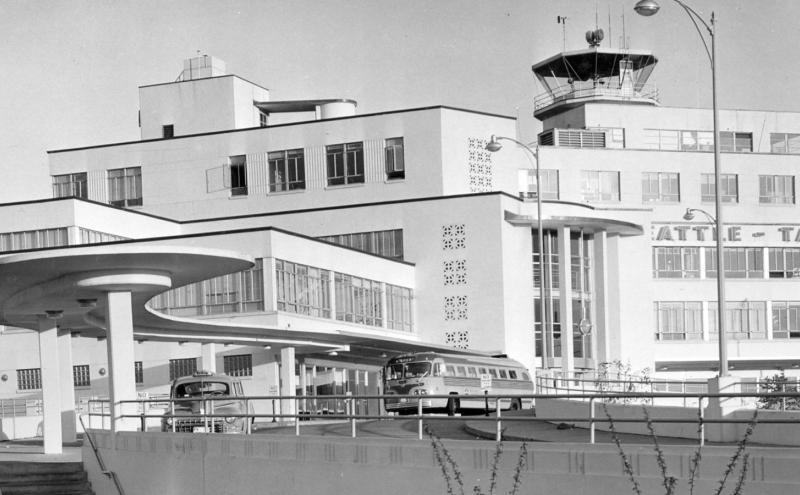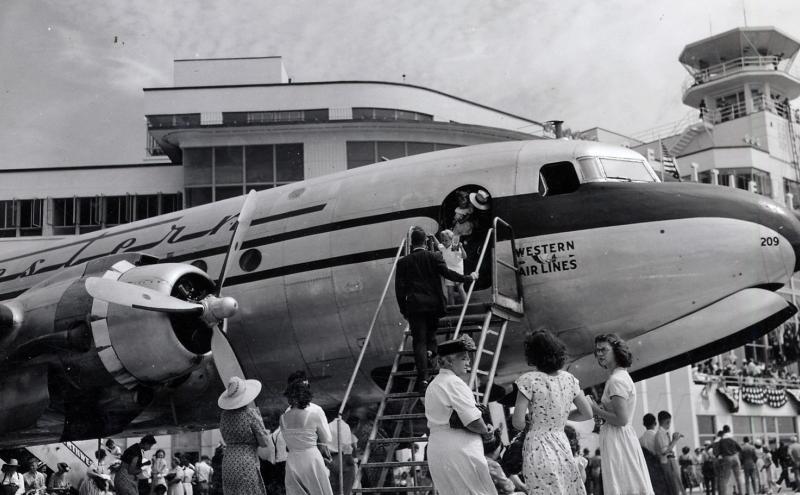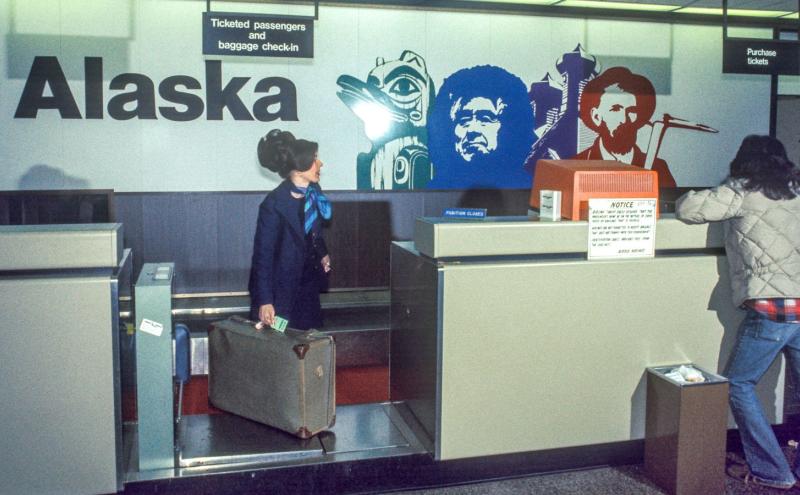
Adapted from “Rising Tides and Tailwinds — The Story of the Port of Seattle” and HistoryLink.org
The 1970s was an exciting and tumultuous decade for SEA Airport and the nation. A new concourse that redefined the airport, prominent visitors, open doors for refugees, and an unsolved mystery that has fascinated people for 50 years.
1970
With the airport expansion, the first 747 service on July 1 at SEA connected Seattle, Chicago, Tokyo, and New York.
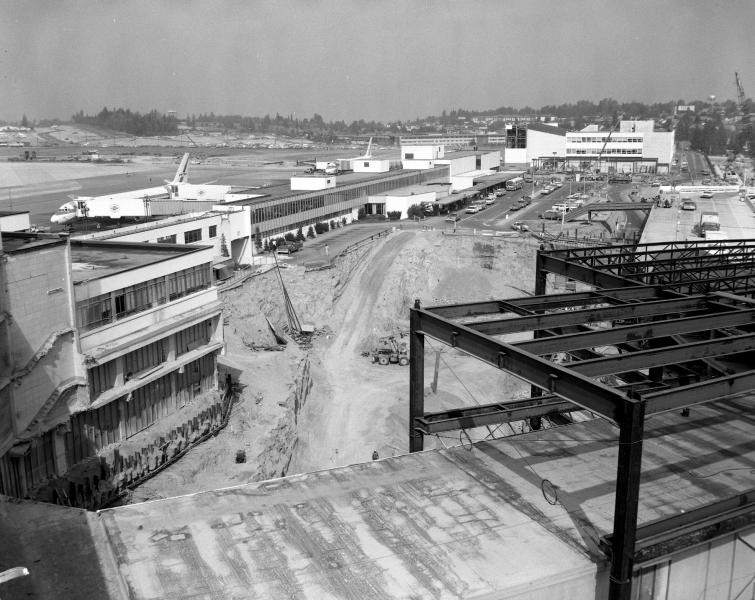
1971
D.B. Cooper commandeers an airplane
On November 24, 1971, a skyjacker calling himself "Dan Cooper" commandeered a Northwest Orient Airlines 727 shortly after it took off from Portland, Oregon, bound for Seattle. After collecting a ransom of $200,000 and four parachutes in Seattle, the skyjacker (erroneously dubbed "D. B. Cooper" due to a misunderstanding by a reporter during a press briefing) directed the crew to fly to Mexico. Somewhere over southwest Washington, while the crew was in the cockpit, he lowered the plane's tail stairway and vanished into the rainy night. Fragments of the ransom money were found on a bank of the Columbia River bank in 1980. And his identity is still a mystery.
- Read the entire account on HistoryLink
- Read the full story and an interview with SEA Airport Manager Oris Dunham in Washington History magazine
1972
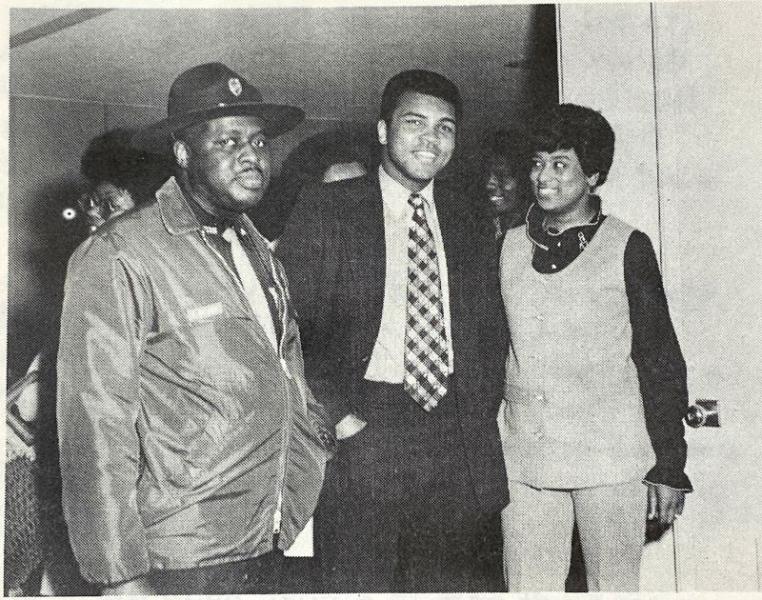
Muhammed Ali
In late April 1972, boxing legend Muhammad Ali was heading to Vancouver, British Columbia, to take on the Canadian George Chuvalo for their second meeting. (Ali had bested Chuvalo in 1967 in a 13-round decision.) In a stopover at SEA, Ali gave a press conference about the upcoming fight to sportswriters and assorted media. The audience also included airline and port employees.
After finishing his press conference, he turned to the group of onlookers. In the crowd Ali mistook Port employee Lois Mahomes for a flight attendant, asking her, "Who do you fly for?”
"For the Port of Seattle,” responded Lois.
Inspired, Ali created the following poem: “Ah, you are on the ground, better stick around, where you can be found."
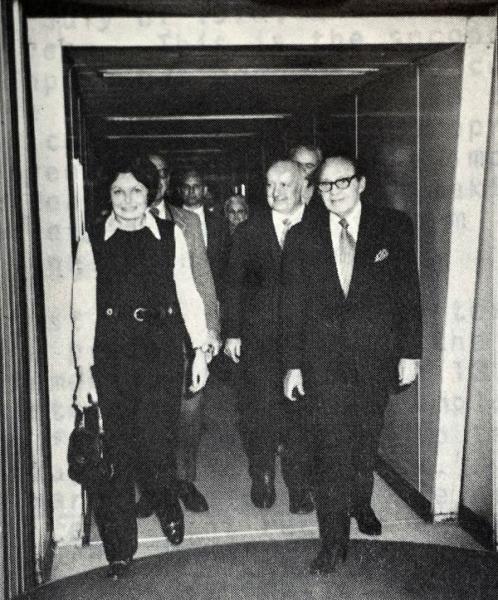
Jack Benny
In April 1972 famed comedian Jack Benny was travelling to a gig in Vancouver, British Columbia, and at a stopover at SEA Airport he sat down to get a shoeshine. Curt Yound, who was shining his shoes, confirmed that it was indeed the famously stingy comedian. He said to Benny, “Uh oh! I sure won’t get a tip now!”
Benny laughed and replied, “For that comment, you’ll be getting a bigger tip!”
1973
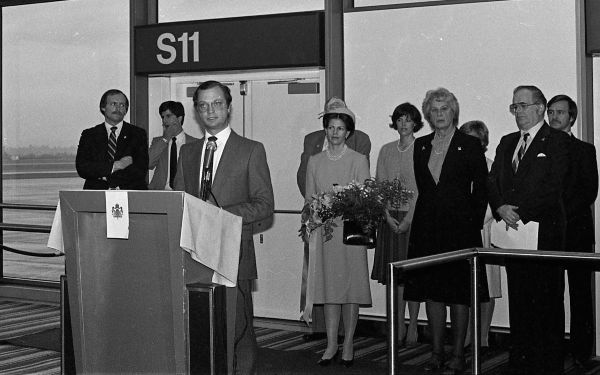
Swedish King Carl XVI Gustaf and Queen Silvia
The King and Queen visited Minnesota, then Seattle on April 10, 1976, and were greeted by a crowd of 300 at the airport. He dedicated the Ballard Avenue Historic district and addressed the Swedish Club. He also met with the Scandinavian Department at the University of Washington and conducted a helicopter tour of Weyerhauser operations.
Opening of the new North Satellite (N Concourse Today)

Of all the Port projects during the 1970s, the rebuilding and expansion of SEA Airport was the largest undertaking. As air traffic rebounded (5.2 million travelers passed through the airport that year), the Port unveiled its new terminals and ancillary facilities. The redevelopment encased the 1949 administration building inside a dramatic new structure featuring vehicle access through an upper drive for departures and a lower level for baggage claim and arrivals. Sky bridges connected the main terminal to a multi-deck parking garage.
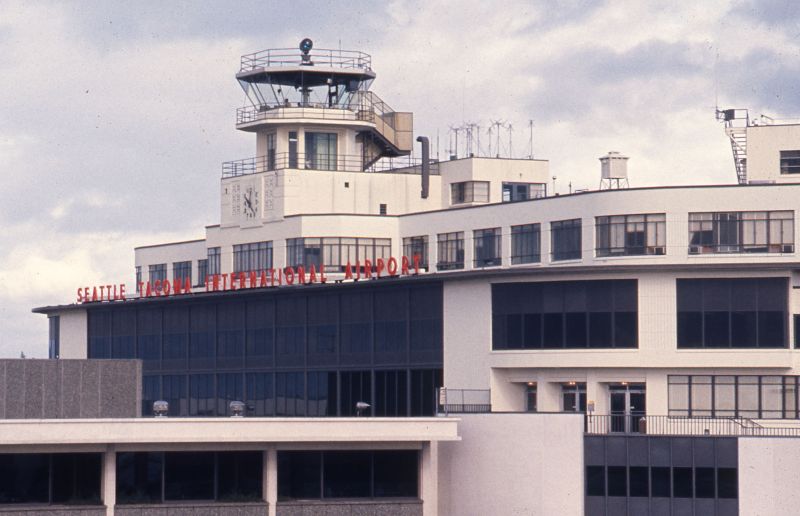
Satellite terminals were added north and south of the main building, which passengers reached via a pair of subway loops equipped with driverless automatic shuttle trains. This train was the first of its kind in the nation and opened in 1973 with nine cars. Other improvements included new facilities for fuel, air cargo, and aircraft maintenance.
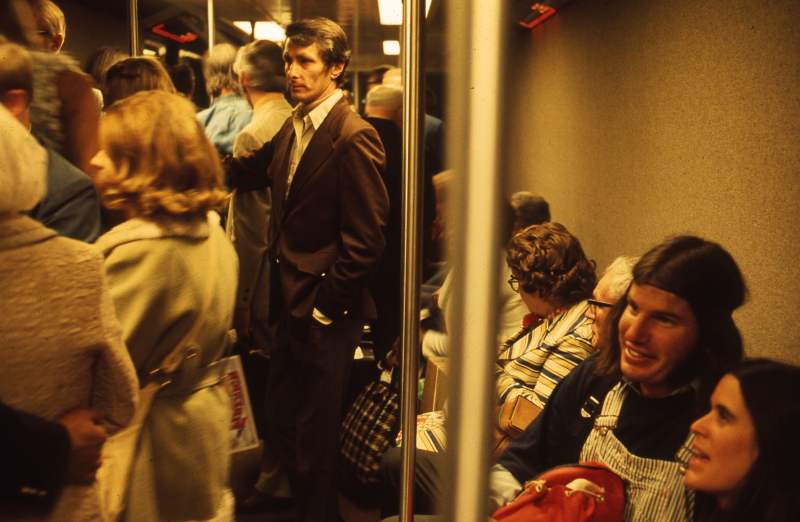
The airport’s redeveloped terminal unveiled in July 1973 — with 35 new passenger gates, an upper drive for arrivals, and a lower drive for departures. The opening was planned and developed in coordination with State Highway 518, the Burien extension to Interstate 405, that allowed a direct link from the airport to Interstate 5, Interstate 90, and Interstate 405. State Highway 509, which was still being built when the new terminal opened, was planned to pass west of the airport.
- Read five fun facts about the North Satellite, which was recently modernized
Public art
The Port also commissioned $300,000 worth of new works by major local, national, and international artists for the terminal. The unprecedented purchase — the first of its kind in any U.S. airport — was the beginning of the Port’s public art collection, which grew to include significant art works throughout public areas and offices at the airport.
- See the art collection
Electrical conservation
SEA Airport worked to reduce electricity by 15 percent. This was shortly after Seattle introduced the Kill-a-Watt campaign on July 17, 1973, which included voluntarily electricity conservation measures.
- Read more at HistoryLink
1975
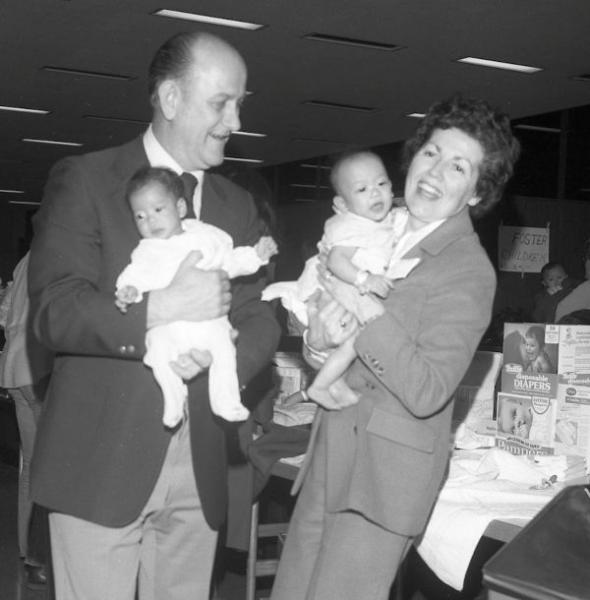
Open doors to refugees from Vietnam
It was early morning in the governor’s mansion, spring of 1975, when Washington Governor Dan Evans caught a news broadcast that California’s Gov. Jerry Brown was opposing the resettlement of Vietnamese refugees in his state.
The Vietnam War ended April 30 with the fall of Saigon to the communists. U.S. Secretary of State Henry Kissinger wanted funding to care for as many as 70,000 refugees. Thousands were taken to California, but Brown took actions against it. One of Brown’s aides even tried to keep the first airplane from landing.
Evans, a Republican, was incensed. “This was not the attitude we wanted associated with our state,” Evans told The New York Times. He was determined to show the governor of California — a state 2.3 times larger than Washington — how Washingtonians would lead the way.
Sure, there was opposition in Washington State. But Evans would overcome that. “This is a genuine national challenge,” he told a reporter that year. “It's really not all that tough. And yet it helps so many people directly.”
When the first 34 people arrived to a cheering crowd at SEA the afternoon of May 20, 1975, Evans greeted them in their native language. These steps, Evans said earlier that day, were a moral responsibility. By the end of September, nearly 1,400 had been placed through the state program that initially housed refugees at Camp Murray.
Even before the start of the refugee resettlement program, the airport was where hundreds of Vietnamese children met their new families.
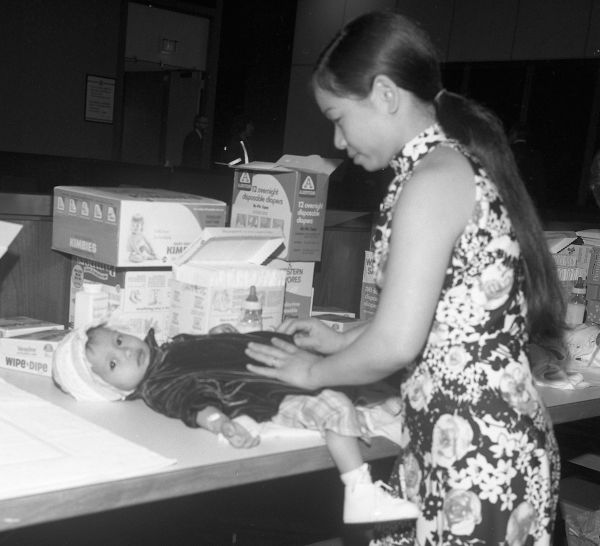
Dubbed “Operation Babylift,” the first plane of Vietnamese refugees landed at SEA Airport at 12:37 a.m. April 6, 1975, less than a month before the fall of Saigon. Adoptive parents lined the windows of Concourse A hours ahead of the flight’s arrival. When the Pan-Am flight touched down with 414 children and 67 adults, parents held pictures of their children and workers from an Oregon-based service agency introduced them, matching the children with numbers on their plastic bracelets.
Among the orphans was a four-month-old girl who’d been found abandoned outside the Vietnamese capital. She was evacuated on a U.S. Air Force cargo plane, but four days before her arrival at SEA that cargo plane crashed while trying to make an emergency landing. She was among the few survivors, though her identifying paperwork was burned in the crash.
When the infant met her parents at SEA “the four-month-old Vietnamese orphan girl didn’t even raise an eyelid as Western Airlines chaperone Marge Franklin placed the infant in the arms of new newly adopted parents, John and Lana Mitsules,” the Post-Intelligencer reported. “It is possible that she was the youngest to survive the crash near Saigon that killed about 178 persons, most of them Vietnamese orphans.”
The willingness of Washingtonians to help and Evans’ actions to create the refugee resettlement program — making the Evergreen State the first state to step forward — set a model that would continue for decades.
- Read about more recent initiatives to welcome Afghan refugees
1976
Like most airports, Seattle-Tacoma International Airport (SEA) has large tracts of open, improved land that provide an added buffer for both safety and noise mitigation. But these areas also provide an appealing home for animals. Wildlife and airplanes don't mix. SEA Airport has a comprehensive wildlife management program that makes the airport less attractive for certain wildlife species, thus ensuring a safe environment for aviation and passengers.
In 1976, SEA Airport became the first in the U.S. to employ a full-time wildlife biologist and to develop an ecological approach to maintaining aviation safety and protecting wildlife – creating the model for other airports around the world.
- Learn about the wildlife biology program at SEA Airport
- And a profile of one of the biologists
Air cargo growth
The Port added air cargo facilities during the 1970s and then doubled cargo handling capacity in the early 1980s with a new air cargo center. Under this program, container ships from Asia seamlessly unloaded cargo onto trucks that rushed it to airplanes at SEA Airport for immediate flight onward to European markets.
- Read about today's air cargo at SEA
1978
Airline deregulation
The Carter Administration persuaded Congress in 1978 to deregulate the airline industry, allowing carriers to determine their own domestic routes and fares. Airlines strongly supported deregulation, but many were unprepared for the resulting price wars and unfettered competition, particularly since the change came in the midst of a nationwide recession that cramped air travel and put economic pressure on carriers. Plenty of new airlines sprang up, but many of them, along with some industry stalwarts, soon went bankrupt. Airlines workers also took a hit, as financially squeezed companies pressured unions to sacrifice wages and benefits or see their jobs disappear.
In the long run, both the number of airlines serving SEA Airport and the number of passengers would reach new higher levels. But passenger traffic, which had reached nearly 10 million in 1979, dropped sharply over the next two years.
1979
- The Dalai Lama arrives in Seattle for three days


